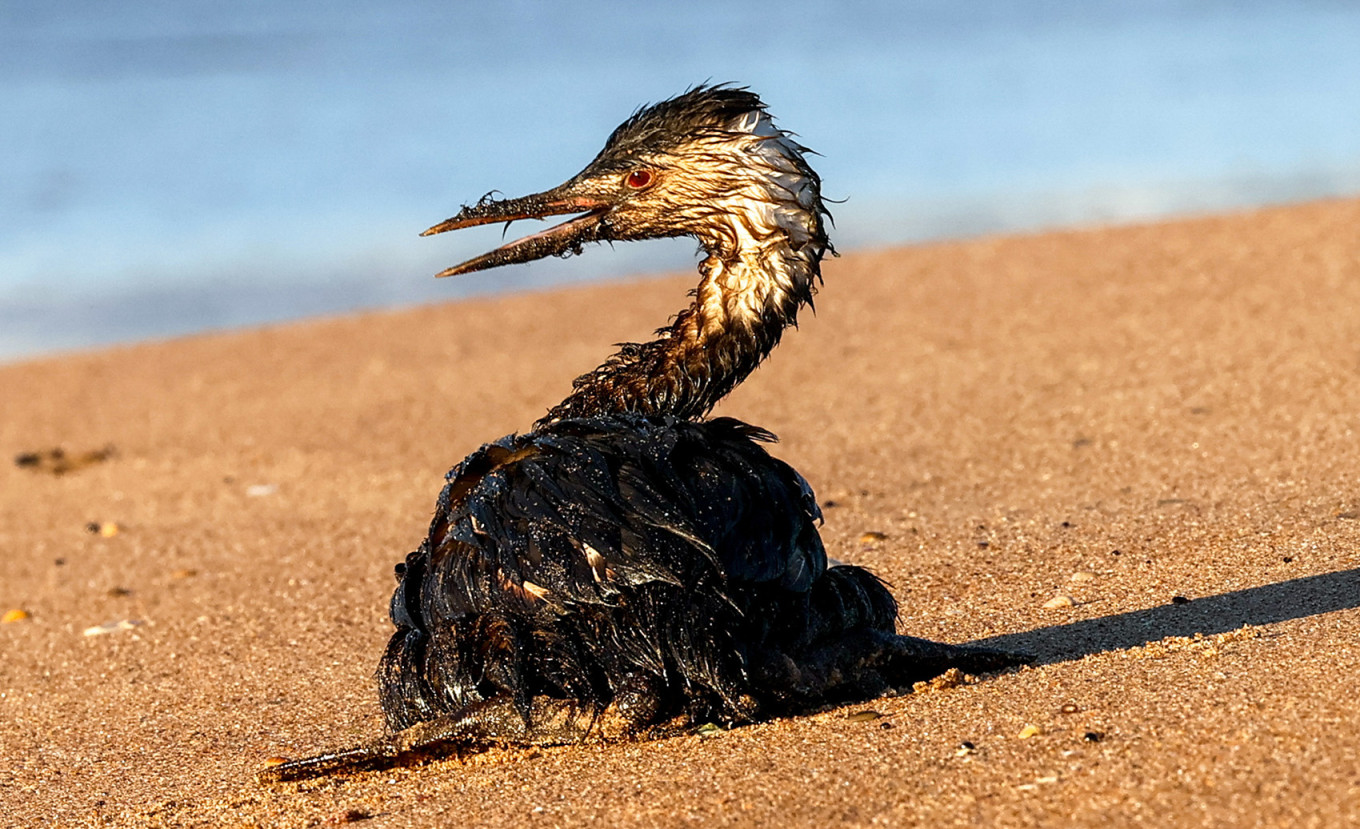Rescue workers and volunteers continued to clean up Russia's Black Sea shoreline on Wednesday after two oil tankers were badly damaged in a storm, spilling an estimated 3,000 metric tons of oil products.
The oil muck now covers up to 50 kilometers of shoreline, according to the environmental news outlet Kedr.Media. Scientists estimate that up to 10,000 birds are in the hardest-hit areas, half of whom may die as a result of the spill.
These photos show the impact of the oil spill on the coastline and the wildlife that live there:

A great crested grebe soaked in mazut fuel oil wanders the beach near Stanitsa Blagoveshchenskaya amid the ongoing oil spill clean-up operation.
Sergei Malgavko / TASS

Volunteers help emergency workers collect oil-soaked beach sand near Stanitsa Blagoveshchenskaya.
t.me/opershtab23

Volunteers help emergency workers collect oil-soaked sand from the beach near Stanitsa Blagoveshchenskaya.
t.me/opershtab23

A great crested grebe soaked in mazut fuel oil wanders the beach near Stanitsa Blagoveshchenskaya.
Sergei Malgavko / TASS

Volunteers help emergency workers collect oil-soaked beach sand near Stanitsa Blagoveshchenskaya.
t.me/opershtab23

Volunteers help emergency workers collect oil-soaked beach sand near Stanitsa Blagoveshchenskaya.
t.me/opershtab23

Stains of mazut fuel oil cover the beach near Stanitsa Blagoveshchenskaya.
Sergei Malgavko / TASS

Volunteers help emergency workers collect oil-soaked sand near Stanitsa Blagoveshchenskaya.
t.me/opershtab23

Volunteers help emergency workers collect oil-soaked beach sand near Stanitsa Blagoveshchenskaya.
t.me/opershtab23

Stains of mazut fuel oil cover the beach near Stanitsa Blagoveshchenskaya.
Sergei Malgavko / TASS

 By The Moscow Times | Created at 2024-12-18 12:15:19 | Updated at 2024-12-18 15:04:33
2 hours ago
By The Moscow Times | Created at 2024-12-18 12:15:19 | Updated at 2024-12-18 15:04:33
2 hours ago








